Way Back When? The ’90s Nostalgia Boom and Why We All Long for a Simpler Time

Photo: Mark Piovesan via iStock / Getty Images Plus
The word “nostalgia” evokes images of everything from classic cars to Woodstock to bellbottoms, all the way back to the golden age of Hollywood. Think James Dean in Rebel Without a Cause, not James Van Der Beek in Dawson’s Creek. But the ’90s began 30 years ago, meaning that nostalgia for that decade today is akin to nostalgia for the 1970s in the year 2000. And no one made a fuss about that.
Yes, the 1990s are officially nostalgic because, just as Paul Simon sang, “Every generation throws a hero up the pop charts,” every generation also tints their pop culture with rosy reminiscences. Now, it’s the millennial generation’s turn.
The ’90s nostalgia kick began in the early 2010s but gained serious traction in recent years, fuelled by total pop culture recall like the resurgence of the hit sitcom Friends — thanks to Netflix — including 50-year-old Jennifer Aniston, who crashed Instagram in October when she joined the social media platform with a photo of her and the Friends cast, setting a world record by amassing one million followers in just over five hours. She currently stands at 21 million followers and counting.
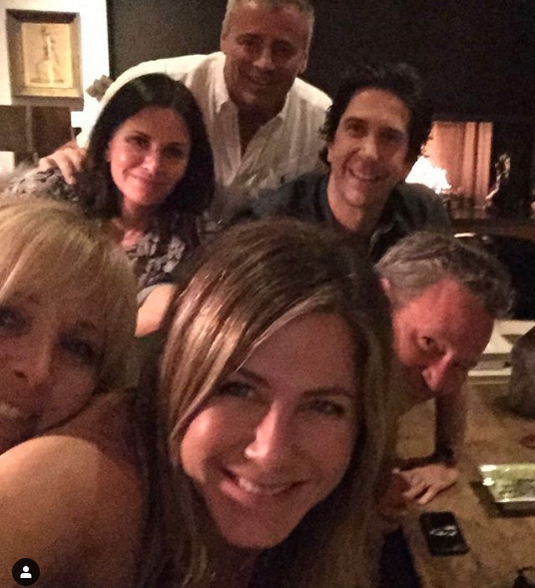
Of course, millennials make up close to 65 per cent of Instagram’s user base, which explains why ‘90s nostalgia accounts flourish, offering users a regular fix of the decade’s cultural headliners, from the Britney Spears/Justin Timberlake romance to Kirk Cobain candids to Dennis Rodman’s outlandish hairstyles and, of course, photos of the Friends cast.
Meanwhile, hit ’90s shows like Full House, Boy Meets World and Beverly Hills 90210 landed reboots as bands like Backstreet Boys, the Spice Girls, Smashing Pumpkins and Hootie and the Blowfish returned to touring. Even Canuck rocker Alanis Morissette, 45, announced she’ll hit the road in 2020 to mark the 25th anniversary of Jagged Little Pill, her seminal 1995 album, alongside fellow ’90s mainstays Liz Phair and the band Garbage. McDonald’s, meanwhile, brought back ’90s-era Happy Meal toys, lip gloss sales surged and ‘90s themed board games are hot holiday gift items in 2019.
The 1990s as Nostalgia? As If!
Rapper Vanilla Ice, 52, who dropped his hit album To the Extreme in 1990, told Rolling Stone last year that he considers the 1990s the “last truly great decade,” adding, “How would you look back at 2000 to 2017 and remember anything? How would you see somebody wearing some gear and say, ‘Hey, that’s gotta be from 2014?’ There’s no music there, there’s no pop culture, there’s no fashion that defines the generation.”
In a similar vein, Bustle’s Sophie Atkinson says, “We’re emotionally invested in the entertainment from [the ’90s] because back then, with limited access to every album/TV show/film ever, the ones you did own meant absolutely everything to us.”
In 1998, when she was 13, Toronto-based journalist and editor Randi Bergman filled a time capsule with personal items of the era — everything from Spice Girls stickers to Titanic movie ticket stubs to candy wrappers and photos of celebrity crushes. She opened the capsule in 2017 and created a viral hit when she shared the contents on Instagram, following it up with a podcast about nostalgia and now a website, Capsule 98. It’s dedicated to “the formative objects, places and experiences that shape who we are,” regardless of generation or decade.
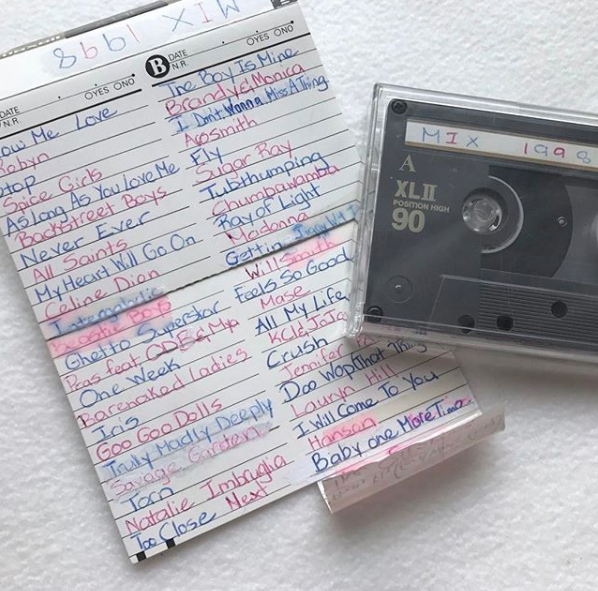
The 34-year-old suggests one reason for the boom in ’90s nostalgia is that millennials fully indulge it online in a way that previous generations, who didn’t have the internet when they were in their 20s and 30s, never could.
“Another reason that I know is because of the direness of how everybody’s thinking of the world right now and the fact that things are very down,” she says in an interview. “Maybe people are nostalgic for an easier, simpler time, pre-social media. That could be part of it too.”
I Want It That Way
Bergman may be on to something. In 2013, University of Surrey psychologist Erica Hepper told the New York Times that feelings of nostalgia actually peak in young adults and again in old age while slumping somewhat in the years in between. “Nostalgia helps us deal with transitions,” Hepper said. “The young adults are just moving away from home and or starting their first jobs, so they fall back on memories of family Christmases, pets and friends in school.”
For millennials, like other generations, nostalgia serves as a safety blanket, a source of comfort and a means of temporary escape from the demands of adulthood. The word “nostalgia” itself is a combination of two Greek words that mean “homecoming” and “pain.” Or, in other words, homesick.
But Bergman adds that nostalgia also serves another purpose, serving as a kind of online shorthand.
“For example, take a meme — put a picture of some classic ’90s thing and put some new frame of reference on it, and it instantly makes sense. Whereas someone like my sister [who is 10 years older] … it doesn’t immediately resonate to her the same way.”
Another Canadian millennial, Lee Davis, 24, takes the idea of nostalgia as communication to the next level with HideSeek, a pop-up he co-founded that currently resides in Montreal and courts millennials “wanting highly interactive experiences that are also very shareable and Instagramable.”
HideSeek is unique in the nostalgia business in that it isn’t pegged to specific pop-culture references. Guests tour rooms outfitted with elements relatable to all generations: rooms themed around items like crayons, boxes of classic kids’ cereals, a Slinky salon, a shopping cart to push your pals around in and even a ball pit. In addition, some rooms contain oversized items, their massive scale creating a childlike sensation for visitors.
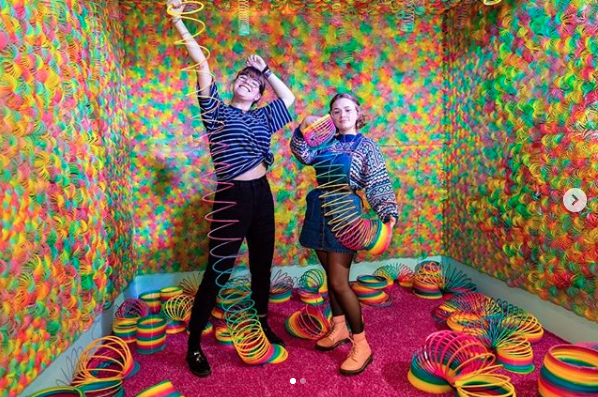
“That’s what we really focused on — less about specific nostalgic memories and more to create an experience that lets you feel like a kid,” Davis says. His idea of nostalgia is centred on the notion of “play,” evoking memories of recess or after school sports.
“Nostalgia’s just so powerful,” he adds. “And I can just see it from the customers’ reactions. When they see something that reminds them of their past or it makes them feel like kids, they get this warm, gushy feeling.”
Davis says people of all ages, including grandparents with their grandkids, enjoy HideSeek, including “two grandmas [who came] in, and they took a photo in the shopping cart and in the ball pit, and it went pretty viral.” But his customer base remains millennials, many of whom come in search of an escape from the daily grind. “They say, ‘Oh my god, I get to go to a one-hour experience that’s going to let me feel like a kid again? I get to step outside from my normal day-to-day routine?’”
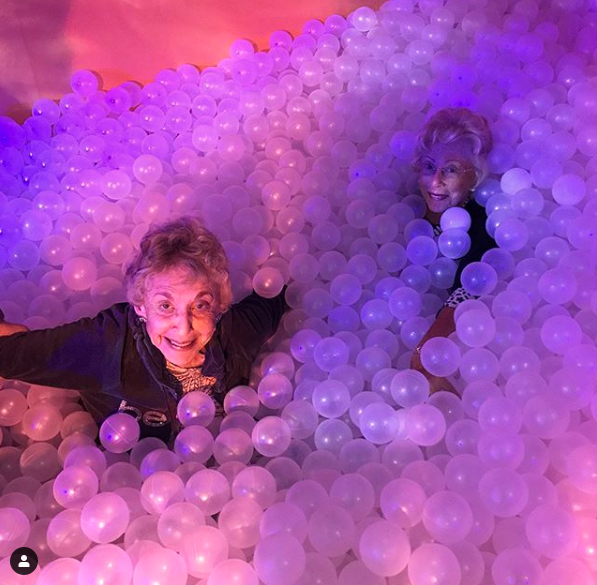
Beyond ’90s Nostalgia
At the same time, millennial nostalgia extends beyond the 1990s to feeling fondness for a time they didn’t even experience.
In fact, a 2013 study out of Cornell University showed that “music transmitted from generation to generation shapes autobiographical memories, preferences, and emotional responses, a phenomenon we call ‘cascading reminiscence bumps.’” The study used specific examples of millennials in their 20s listening to the music their parents enjoyed at the same age.
Elaine Wren regularly witnesses a similar nostalgic phenomenon in action. The 52-year-old Toronto native works as the show manager for Steve Michaels, an Elvis Presley tribute performer, and has worked with Beatles tribute performers as well. She regularly sees three generations of family members attend the concerts, adding, “If the grandparent or parents were invested in that time period and that music, it seems to have been passed on generation to generation. That’s the only way they can experience what their older relatives experienced … They see it through their eyes.”
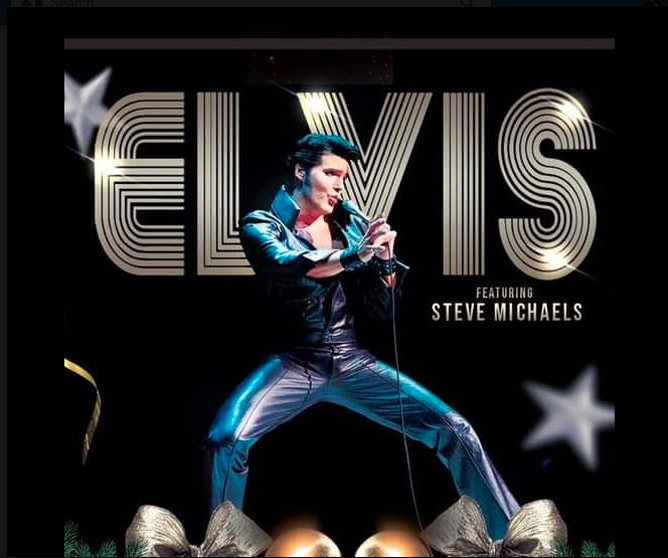
For Wren, “Nostalgia kicks in when you’re trying to keep a feeling alive, keep a memory alive. I think nostalgia’s more of a feeling. It’s sometimes not even [attached to] a time frame.” And like nostalgic millennials, Wren says that many of the older audience members she speaks to “miss the simplicity of ‘back then,’ and these shows take them back to that world that they miss.”
How Looking Back Allows Us to Move Forward
In reality, both baby boomers and millennials yearn for a simpler time. The only difference is the decade for which they long. Generational preferences aside, though, it turns out that nostalgia is actually good for you.
Clay Routledge, a psychology professor and author of Nostalgia: A Psychological Resource, told New Orleans Public Radio in 2017 that while people turn to nostalgia in times of stress, it actually makes them more optimistic about the future. He adds that studies “show this both in terms of people reporting that they’re more optimistic about the future, more inspired but also behaviourally, too, in terms of people actually going out and wanting to interact with and meet people after they’ve engaged in nostalgia.”
So ultimately, while decades and generations move on, the human impulse to revisit our past for a nostalgic boost remains constant. And that’s a good thing, regardless of what you actually consider nostalgia.
“I feel like everybody connects to nostalgia in a different way, whether you’re 90 or you’re 10,” Bergman says. “I think about it all the time — what are the things now that we take for granted or that are so commonplace? And we’re just going to one day be like, ‘Oh, I miss Netflix binging.’ Who knows? That could be nostalgic.”
RELATED:
Nostalgia: A Tale of Christmas Past at Eaton’s Toyland
Nostalgia: A Wartime Recipe for Woolton Pie
Nostalgia: A Throwback to When Papers Were Delivered by Erstwhile, Ink-Stained Kids